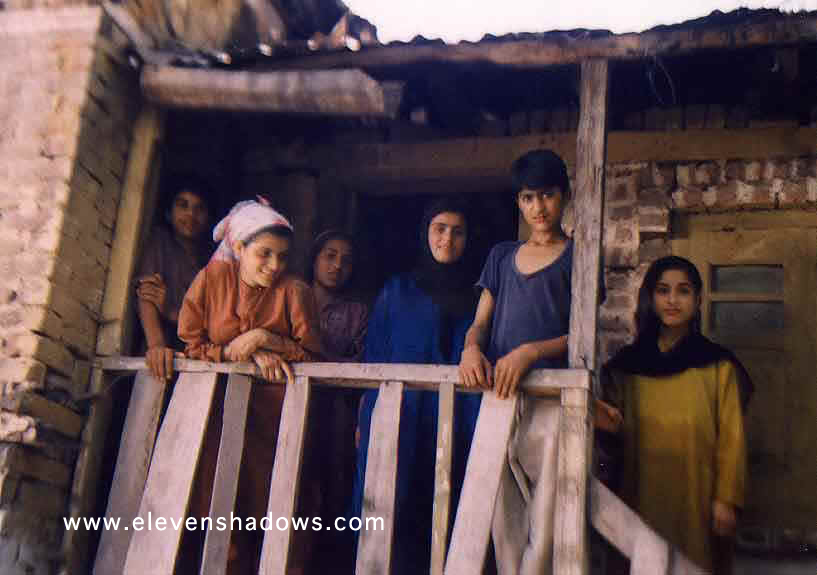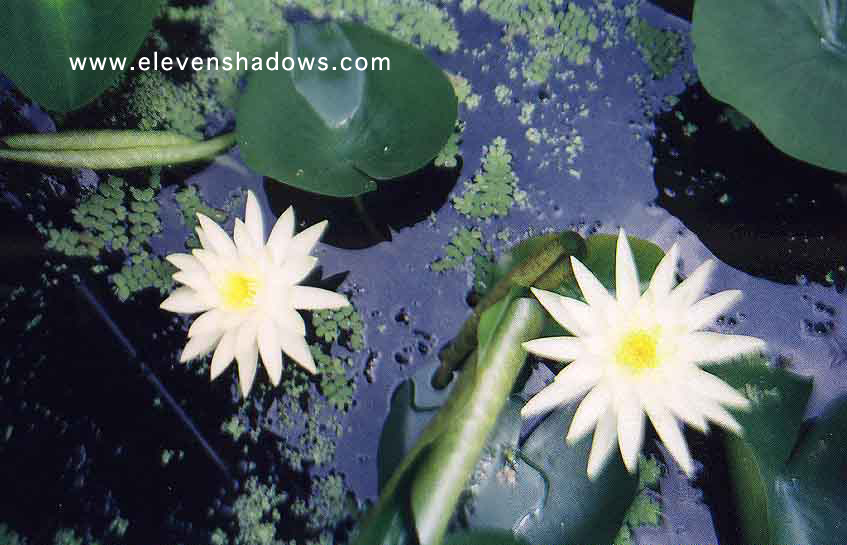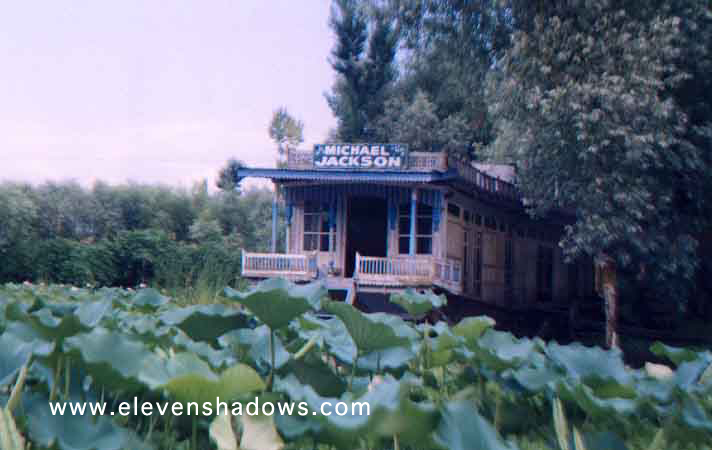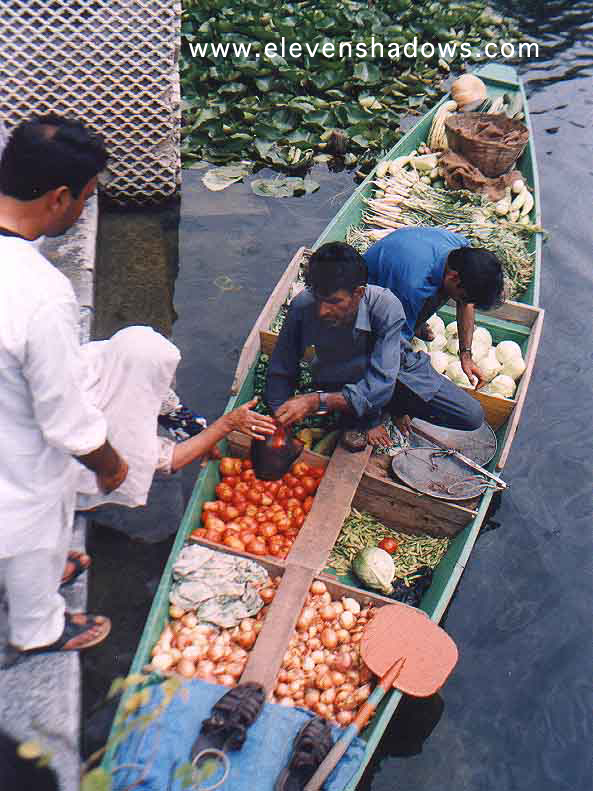|
|
Villagers in Sopor, taking a
break from weaving Kashmiri carpets. Sopor is a small
village located along the banks of Wular Lake, several
hours' drive outside of Srinagar. The people here are
relatives of the Khuroos, the owners of the houseboat
where I stayed for over five and a half weeks on Dal
Lake. ~~ ABOUT THE CAMERA USED FOR THESE PHOTOS: |
|
Jhangir, part of the Khuroo
family that runs the magnificent Ajanta Palace houseboat
in Kashmir (Srinagar, Dal Lake). I was deeply moved by
the hospitality of the Khuroo family, whom I now consider
to be like my family. The Khuroos, like most Kashmiris, have been deeply affected by tensions from the conflicts between India and Pakistan. Tourists have evaporated, and so has the money. There are scarcely any jobs. Most jobs are given to Hindus, coming up from the plains. Kashmiris must regularly bribe officials to gain entry into the university in Srinagar.
|
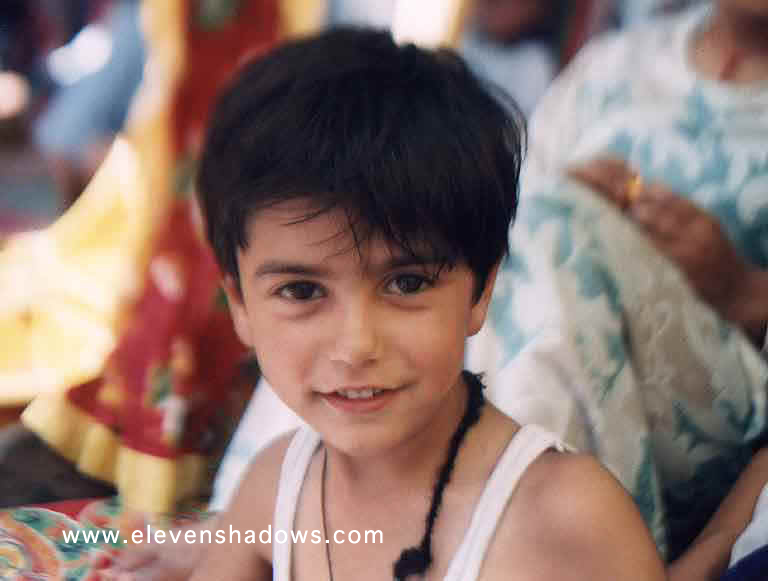 |
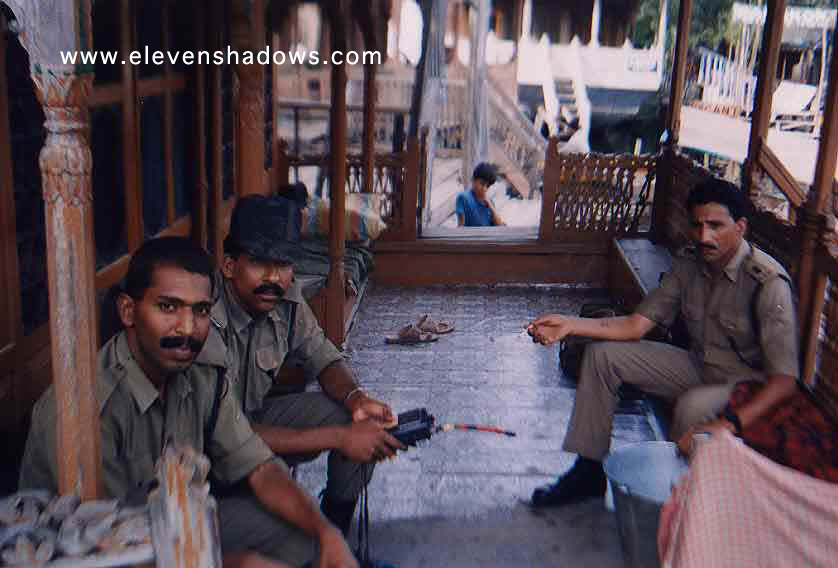 |
There is a very strong
military presence all over the Kashmir region. I was
searched five times within a hundred meters when
departing from Srinagar. India has the second largest
army in the world, but much of it is stretched along the
border of Kashmir/Pakistan border and the Ladakh/China
border. While staying at the Ajanta Palace houseboat, a group from the Indian Army stayed next door, asking the houseboat owner to provide food and shelter for free. Everyone carried on as usual. I asked the owner of the houseboat if this happened frequently. He nodded his head in a very tired, exasperated manner. |
|
Lotus flowers in Dal Lake,
just outside the Ajanta Palace houseboat. Kashmiris around Srinagar informed me that Dal Lake was once clean, but a lot of the pollution is from the Indian Army dumping pollutants and garbage in the river. Fayaz, one of the houseboat owners, sometimes is paid by the city to help clean up the lake. Jobs are scarce, but he tries to find work doing anything to make money, including building roads up in the Himalayan Mountains or picking apples.
|
|
 |
I had an interesting
opportunity to be able to witness a houseboat in
construction. Here, one of the artisans is carving one
of the wooden posts that will eventually become the posts
for the outer deck of a super deluxe class houseboat.
Many Kashmiris hold out a great deal of optimism for the
future, thinking that eventually, tensions will subside,
visitors will come back, and Kashmir will again be known
for its natural beauty and hospitality, and not for its
bloodshed. |
|
.I joined the thousands, nay, dozens, of pilgrims who journey endless miles to reach the Michael Jackson houseboat. Regrettably, I failed to inquire as to whether this houseboat has a day-care center. There are quite a few houseboats that have
interesting names, such as "Neil Armstrong",
"Jupiter", and "Holiday Inn". I
have plans to eventually move to Kashmir and open up my
very own houseboat, the "Pamela Anderson". This
will have to wait until the day that nuclear war between
Pakistan and India doesn't seem imminent. |
|
|
|
Shikhara vendors paddle from
houseboat to houseboat, selling various items, such as
the fruits and vegetables seen here. The vegetables in
the shikhara have been plucked only hours ago --
extraordinarily fresh! Due to the extremely rich soil in
Dal Lake, no fertilizer of any kind is needed to produce these extremely
healthy and delicious vegetables and fruits. I saw huge, red, tasty tomatoes
the size of softballs, erupting out of the soil. A Kashmiri farmer asked me, "Is it true that in America, the farmers use cow dung to grow fruits and vegetables?" |
|
This photo is allegedly the sarcophagus of the tomb of Jesus Christ (Khanyar Rozabal). It is
believed by many Kashmiris, as well as many Biblical and Asian
scholars, that Jesus Christ ("Yuz Asaph" or
"Issa" to Kashmiris) survived the crucifixion and fled
to India, and eventually to look for the Lost Ten Tribes of
Israel in Kashmir, where he was laid to rest at about 80 years of
age. |
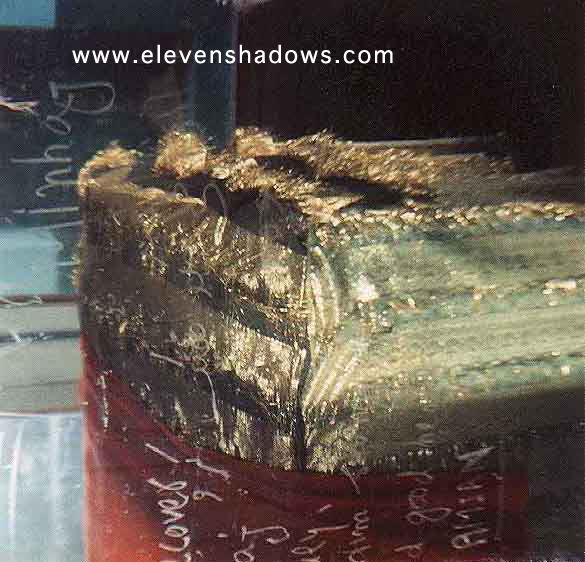 |
 |
Entrance to Khanyar Rozabal,
Srinagar, Kashmir. There are quite a number of Biblical scholars in India, Kashmir, and the West who have found evidence in many ancient scriptures that indicate that Jesus survived the crucifixion and fled to India to rejoin the "Lost" Ten Tribes of Israel. These books on this link are a small sampling of the multitude of books available on this subject. ~~ "Jesus Lived in India", a book by Holger Kersten, outlines much of these theories in intricate detail, and is at the very least an impressive piece of research. It's a fascinating read, whether you believe that Jesus survived the crucifixion or not. Will we ever know the truth? I have more photos of Khanyar Rozabal from my 2005 trip to Kashmir. And I have a special page devoted to Khanyar Rozabal as well, including six more photos from 1997 not shown here. |
|
This photo I took of Khanyar Rozabal (along with six others) can also be found at the Tomb of Jesus web site, site of author Abubakr Ben Ishmael Salahuddin, who has recently published a book entitled Saving The Savior. Khanyar Rozabal, located in Srinagar, allegedly houses the tomb of Jesus Christ. According to author Holger Kersten and other Western and Kashmiri scholars, it has been a practice of worshippers to place candles around the tombstones. When the centuries-old layers of wax were removed some time ago, an incredible discovery was made -- a pair of footprints had been carved into the stone. This is a common tradition in Asia at the shrines of saints, but still, no one had known that these carved footprints were under the centuries of melted wax! |
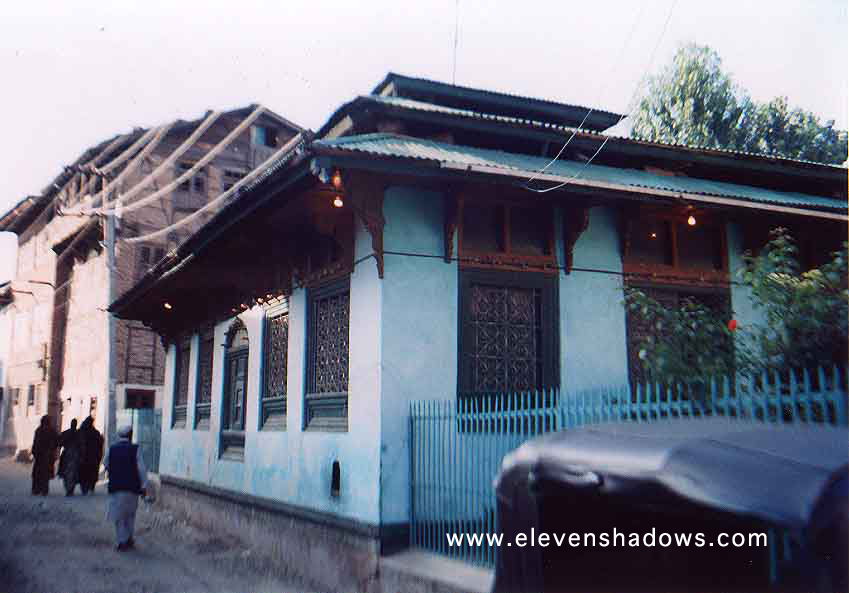
They also found a crucifix and a rosary next to the
footprints . As
the footprints were carved to indicate the identity of the
deceased, like a fingerprint, these footprints clearly show the
scars of the crucifixion wounds, even indicating by the position
of the wounds that the left foot had been nailed over the right,
the same as shown on the Turin Shroud. Crucifixion was unknown as
a form of death penalty in India. The crucifix, rosary, and scars
of the crucifixion wounds were a startling, unexpected discovery! |
|
|
Takht-i-Suleiman, the "Throne of Solomon", on the slopes of Barehmooleh, overlooking Dal Lake atop Shankaracharya Hill in Srinagar. In Tarikh-i-Kashmir ("History of Kashmir"), written in 1420, historian Mullah Nadiri writes that the structure, already a thousand-year old Hindu structure, was restored by a Persian architect during the reign of Raja Gopadatta (79-109 AD). During the renovation, the following was inscribed on the steps in Old Persian:
Dar een wagat yuz asaf dawa-i-paighambar-imikunad.
Sal panjah wa chahar.
Aishan yuzu paighambar-i-bani israil ast. Mullah Nadiri further writes: In a Hindu work it is said that this Prophet was in reality Hazrat Issa (the Muslim name for Jesus), the Soul of God - on whom be peace and salutations. He had assumed the name of Yuz Asaf during his life in the valley. The real knowledge is with God. After his passing, Hazrat Issa was laid to rest in Anzimar (where Khanyar Rozabal is) -from "A Search for The Historical Jesus" by Professor Fida Hassnain). The inscriptions of the temple have been destroyed, but according to Prof. Hassnain, were recorded by other Kashmiri historians, including Mirza Haider Malik Chaudura, Mufti Ghulam Nabi Khanyari, and Pirzada Ghulam Hassan Khuyami, whose Persian works are preserved at the Oriental Manuscript Library, the University of Kashmir, and other libraries in Srinagar. A pillar next to the temple was torn down in the early 1970s by the Indian Army to make room for military structures, and a Srinagar TV tower is perched on the top of the hill.. This temple was also re-converted to a Hindu temple at about the same time. Sultan, the man who took me up to Takht-i-Suleiman, hadn't been up to the top of the hill in 30 years. When we got to the top, he looked around, puzzled, and pointed to the spot where the pillar used to be. Now, only a large circle remained, surrounded by Indian army military structures. Sultan looked at me, then away, and mumbled, "Why do they do these things?" |
|
Muslim man, Srinagar, Kashmir. |
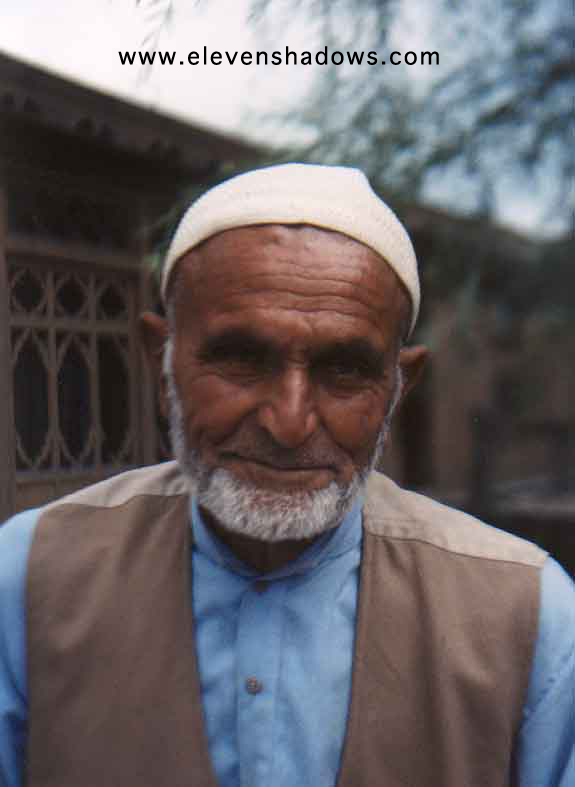 |
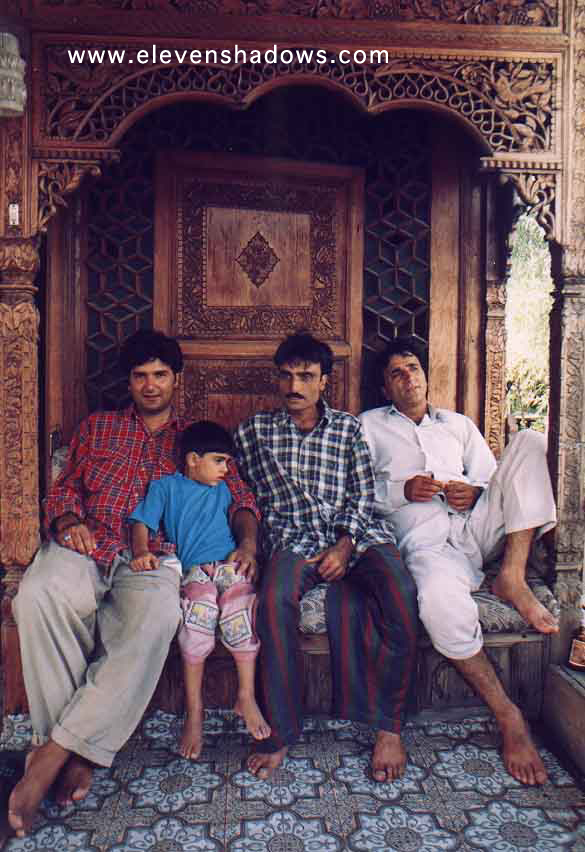 |
The Khuroo family on the Ajanta Palace houseboat. Note the
detailed walnut woodcarving. The world's nicest people...!
For a couple of years, he had sent mail, and I had replied.
The mail had stopped arriving at the Khuroos. Fortunately, Fayaz has a
friend with a computer, and we are able to correspond fairly regularly.
|
|
The Ajanta Palace houseboat, where stayed for over five and a half weeks, when not making road trips to other parts of Kashmir. I created a web site for Ajanta Palace houseboat. |
 |
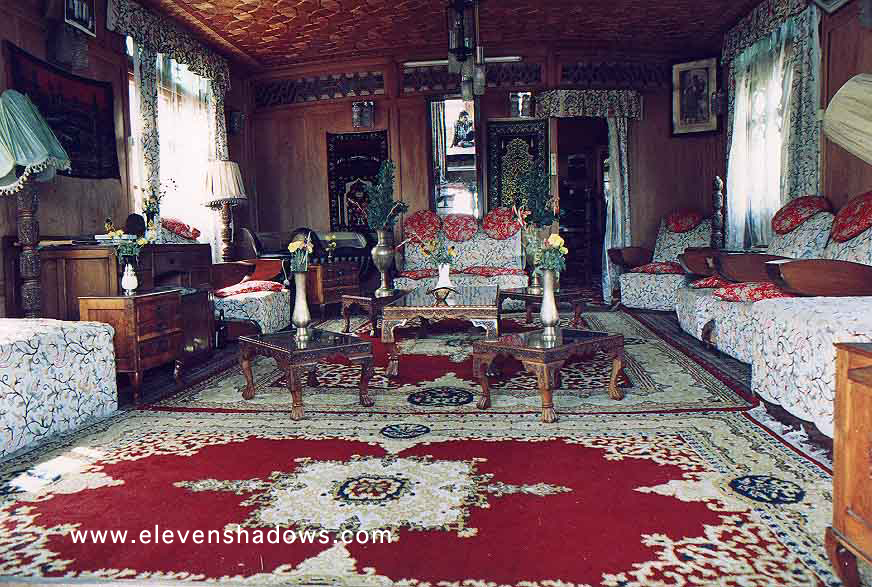
The living room of the Ajanta Palace houseboat.
As mentioned previously, the political unrest in Kashmir has caused tourism to evaporate, although when I was there in August 1997, it had been slowly increasing again. Due to the lack of tourism, prices for accommodations on houseboats have dropped dramatically. I stayed on the Ajanta Palace houseboat for a paltry US$6.50 per day, including three home-cooked meals!!
In 1997, many tourists generously tipped the owners of the houseboats a great deal since the prices were this low. This is largely due to the realization that many of the families are having great financial difficulties, and the extremely low rates that are now available, while wonderful to visitors, do not enable them to make much of a profit. The situation is now of course much worse. Tensions have been ratcheted up ten-fold. This is the land over which two wars in the last fifty years have been fought. As Fayaz says, "Everyone is afraid of war. You can see it in their eyes."
After 5 1/2 weeks in Kashmir, I flew back to Delhi and then to visit my cousin in Hong Kong.
Go to
Hong Kong 1997 Page
Go back to
Ladakh 1997 Page
